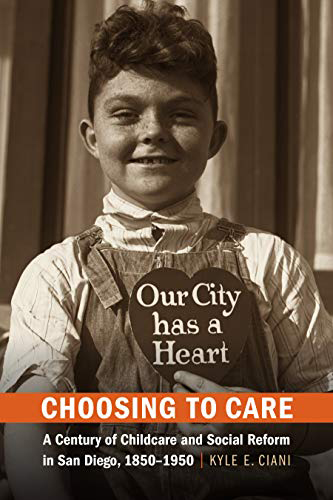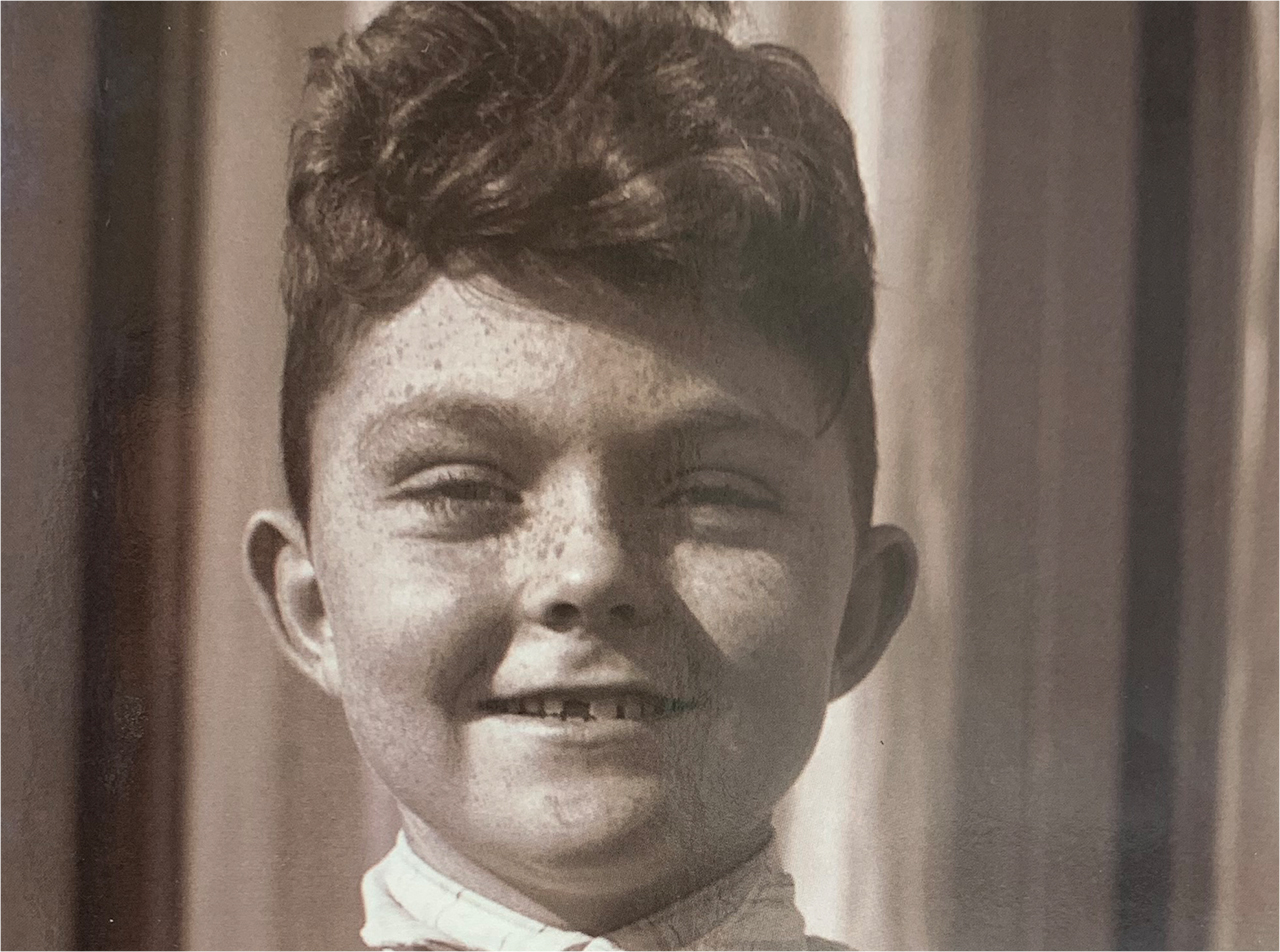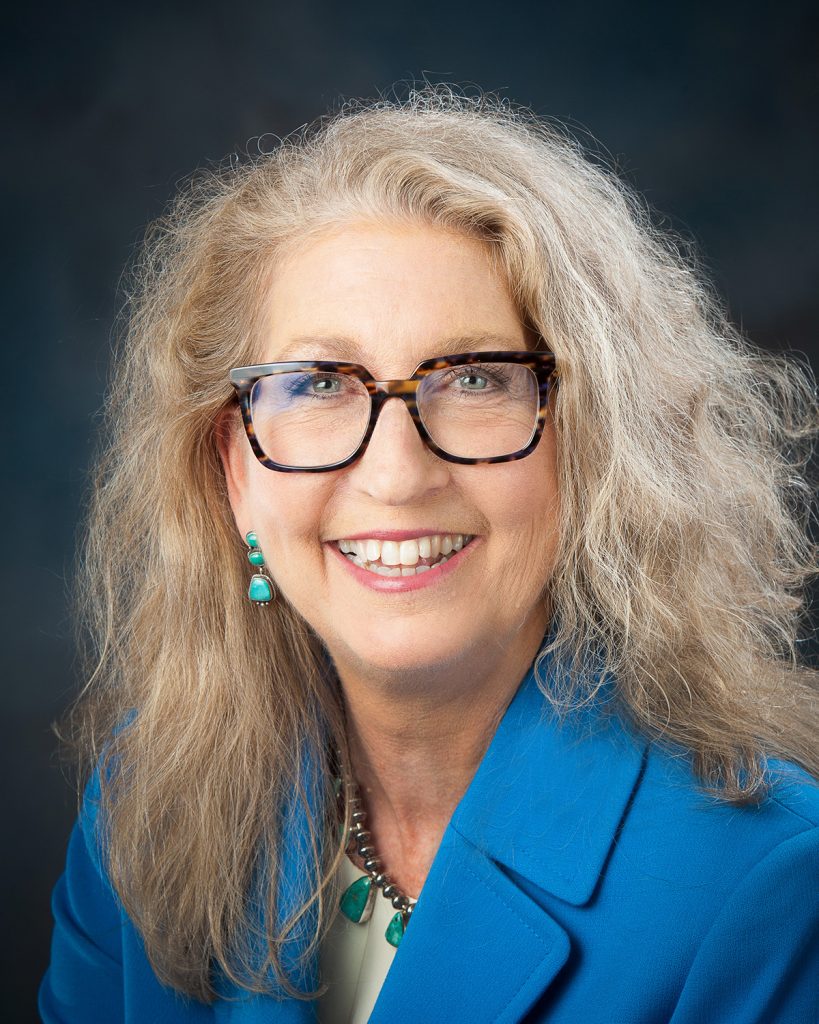A new book by Illinois State University’s Kyle Ciani looks at the history of childcare through a new lens. Choosing to Care: A Century of Childcare and Social Reform in San Diego, 1850-1950 focuses on connections between parents and social reformers in the city of San Diego, California.
“Reformers had one-on-one interactions with the people they were trying to serve so they could be flexible with their assistance,” said Ciani, an associate professor of history who called San Diego home for years. “They listened to the parents and asked them, ‘What do you need? How can we help you?’”
The history of San Diego presented Ciani a unique view of childcare. Generally, historians have used Los Angeles and San Francisco when studying the Pacific coast in this period of time. San Diego’s location close to the border of Mexico, its tourism draw, and ties to military expansion helped develop a unique demographic. “Working-class men and women traveled to San Diego to stabilize their economic situations, but they often left a family network that could help them care for their children,” said Ciani.

Cover of the book by Kyle Ciani, Choosing to Care: A Century of Childcare and Social Reform in San Diego, 1850-1950.
In addition to long-time residents of Anglo and Mexican descent, these workers included immigrants from Asia and Latin America, members of American Indian nations, migrants from Midwestern and eastern states, and a small African American community. “The ethnic and racial diversity of San Diego is different than other communities where childcare has been studied because of its urban development that depended on railroad connections to larger markets.”
The city’s approach to care evolved over the century and included placing American Indian children in indentured service or boarding schools, sending impoverished adolescents to court-appointed reform schools, and establishing day nurseries for children whose parents worked in San Diego’s canneries and factories. “A lot of people seeking care were working-class families going through tough times,” said Ciani, “and they learned they could seek assistance from religious congregations and benevolent organizations.” Natural disasters—floods, droughts, and epidemics—or instability during eras like the Great Depression and World War II forced families to find places for children.
They wanted to assist these children in the ways that their parents wanted them to be assisted. — Kyle Ciani
Ciani found the more active parents were in asking for help, the more likely they were to have a voice in the arrangements. While looking at records from the city’s Children’s Home and Day Nursery established by the Women’s Christian Temperance Union in the late 1880s, Ciani found documentation of reformers working to respect the wishes of guardians. “They wanted to assist these children in the ways that their parents wanted them to be assisted,” she said. Studying court-appointed care cases around the turn of the century, she discovered some parents were the ones looking to the courts. “They asked the public sector to step into their lives because they were overwhelmed by the actions of their troubled adolescents.”
Some of the collaborative nature of reform stemmed from the city’s size. “San Diego was small enough that working-class parents and reformers could learn about and from each other,” said Ciani. Many elements of reform in San Diego still mirrored that of other cities in the United States, including ideas about white superiority. “The predominantly white and largely middle-class community directed how the city handled social welfare concerns and defined agendas based on their understandings of family,” said Ciani. “Reformers learned that childcare needs depended on the workplace dynamic and not one’s racial or ethnic identity; unfortunately, race and ethnicity always defined how reformers acknowledged those dynamics.” Their focus also centered on mothers being able to care for their children, however, Ciani found that the first day nursery developed because working fathers needed childcare.
During times of great stress, such as the Great Depression and World War II, San Diego’s reform network connected with federal opportunities that provided funding for emergency care. But those programs never fully met the need, nor did they last beyond the era’s temporary band-aid.
These lessons from history resonate today. Ciani’s research underscores that families and their needs for childcare are extremely diverse. “We have narrow definitions of childcare, which harm the ways we provide for families today,” said Ciani. “I would like contemporary policymakers to consider childcare as a long-term employee need rather than a social welfare benefit.”


